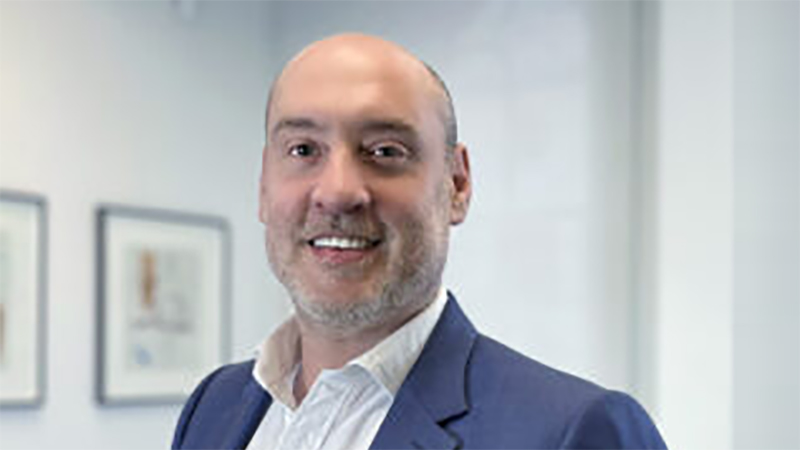Manager of the Credo – Dynamic Fund, Rupert Silver, has said the portfolio will not see an uplift in its equities position despite “valuations appearing cheap”.
Instead, Silver, who is also head of fixed income at the group, said he will be waiting for a more stable environment before pursuing stocks, and is focused on where the team can increase opportunities in fixed income and alternatives positions.
Over the past three years to 22 March 2023, the Credo – Dynamic Fund has returned 50.8% compared to the IA Mixed Investment 40-85% Shares return of 30.5%, according to FE Analytics.
Here, Silver answers Portfolio Adviser‘s questions on asset allocation and the current market environment:
Last year, inflation soared, and interest rates were hiked, while we saw a market sell-off in the first half. How did you navigate these challenging conditions in the Dynamic portfolio?
Dynamic entered 2022 with a balanced portfolio and without undue risk. With concerns about supply chains and inflation, the fund increased exposure to real assets whilst reducing small-cap stocks and technology shares. The largest change over the year was a significant increase in corporate bonds from a notable underweight allocation of around 20% at the start of the year to 40% by the year’s end. Having initially started by tentatively adding short-dated bonds to fix a low-risk yield in an uncertain environment, as interest rates rose, particularly around Liz Truss’s short stint as UK prime minister, we turned more adventurous, buying lengthier maturities offering yields more befitting of the equity market.
The fund is underweight equities – what would you need to see to start buying up stocks again?
To meaningfully increase equities, we would want to see either a more certain and stable world (in either economic or geopolitical terms), or to see valuations that appear cheap on long-term valuation metrics rather than simply cheaper than recent highs.
Where are you finding opportunities in fixed interest? What have you been adding to?
Our last purchase was a short maturity Treasury bill to generate a yield above cash rates as we want all assets to be working hard for investors. In the immediate aftermath of the Silicon Valley Bank debacle it was still possible to fix a yield of over 5% on a 6-month Treasury bill. This seemed a good parking place in times of uncertainty offering both an attractive return and liquidity.
Most of our exposure is in the corporate bond market where we are happy to invest directly in building a diversified and well-laddered portfolio. Our last sizeable additions were towards the end of 2022 when both Barclays and Investec plc issued subordinated (Tier 2) debt at very attractive yields in excess of 8% and 9% respectively. This portion of the capital stack ranks above Additional Tier 1 debt and equity but is junior and higher yielding than senior or secured debt.
Within alternatives, which asset classes are you favouring?
As bond yields have become more attractive in the face of rising rates, we have reduced the fund’s exposure to alternative assets by primarily reducing property exposure.
Our holdings are diverse. This includes a hedge fund, namely BH Macro Limited, a managed futures fund via AQR, as well as commodities, song royalties and a long-term favourite, Gresham House Energy Storage, the UK’s largest listed battery storage firm as a play on the transition to renewables, which is an intermittent power source, leading to an outsized opportunity in batteries to help balance the national power supply.
Many investors moved into 2023 feeling more optimistic but now we are seeing some difficulties in the banking sector, which is causing more ripples in stock markets. How is the portfolio holding up?
Given our low allocation to equities overall, the portfolio is proving to be less volatile than peers so far this year. This is also important given our objective of equity-like returns for lower risk. Whilst our bond portfolio has no exposure to any of the US regional banks, or to Credit Suisse, there has been some weakness in all financial bonds. Dynamic has been performing roughly in line with its peer group in the short term but remains significantly ahead since the fund’s inception.
Have you been adding to any positions in the recent sell-off?
The recent sell-off in risk assets has been accompanied by a reduction in developed government bond yields and a reduction in interest rate expectations.
This ever-changing environment means that for the first time in a year the fund is looking at long duration assets. We have been tentatively adding a small amount to Polar Capital Technology Trust in recent days. The strong balance sheets of mega-cap technology stocks have become more appealing. Additionally, we have initiated a position in Assura plc, attracted by the high-quality rental income with long leases on an underlying portfolio of General Practitioner surgeries.
What’s your outlook for 2023?
We generally steer clear of trying to predict short term market moves but as you might have gathered from our low equity positioning, we don’t feel notably inclined to take big risks at present. Things seem to move even quicker in recent times, and we look to remain agile and flexible to adapt and benefit from changing market conditions.










